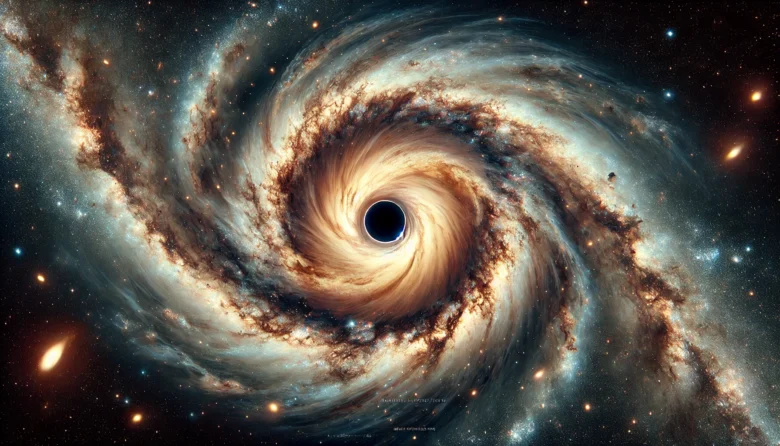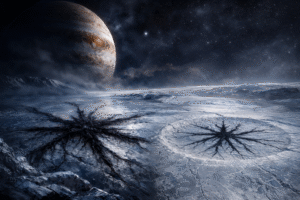Imagine a place where the laws of physics, as we know them, cease to exist—a place so mysterious and powerful that not even light can escape it. Welcome to the world of black holes. In this blog, “The Physics of Black Holes: Understanding Singularities,” we’ll embark on a journey to explore one of the most enigmatic phenomena in the universe. Whether you’re a science enthusiast or just curious about the cosmos, let’s unravel the mysteries of black holes in a way that’s easy to understand and deeply fascinating.
What Exactly is a Black Hole?
At its core, a black hole is a region of space where gravity is so intense that nothing, not even light, can escape its pull. This is why black holes are “black”—they don’t emit any light or radiation that we can detect. But what makes black holes so incredibly dense and powerful?
A black hole forms when a massive star exhausts its nuclear fuel and collapses under its own gravity. This collapse causes the star’s core to compress into an incredibly small and dense point, known as a singularity. Surrounding this singularity is the event horizon—the “point of no return” beyond which anything that ventures gets swallowed by the black hole.
Understanding Singularities
The singularity at the heart of a black hole is a concept that has puzzled scientists for decades. A singularity is a point where matter is thought to be infinitely dense, and the laws of physics break down. In simpler terms, it’s where our understanding of space, time, and matter ceases to function normally.
To grasp this better, imagine cramming the mass of a million suns into a space no bigger than a pinhead. The resulting gravity would be so intense that space and time would warp around it, creating a gravitational well so deep that nothing could escape.
This idea of a singularity challenges our understanding of the universe. It’s where the equations of Einstein’s General Theory of Relativity (which describes gravity) meet the strange and quantum world of particle physics. Yet, at the singularity, these two theories contradict each other, leading to one of the biggest mysteries in modern physics.
The Role of Black Holes in the Universe
Black holes aren’t just cosmic monsters lurking in the universe; they play a crucial role in shaping galaxies and the universe itself. Supermassive black holes, which have masses ranging from millions to billions of times that of the Sun, are typically found at the centers of most galaxies, including our Milky Way.
These supermassive black holes can influence the formation and evolution of galaxies. For instance, they can regulate the rate of star formation by swallowing gas and dust or by launching powerful jets of radiation that can heat up surrounding material.
Indian Contributions to Black Hole Research
India has made significant contributions to our understanding of black holes. The work of Indian physicist Subrahmanyan Chandrasekhar (Chandra) is particularly noteworthy. In the 1930s, Chandrasekhar calculated the maximum mass of a white dwarf star, which is now known as the Chandrasekhar limit. His work laid the groundwork for the understanding of stellar evolution and the formation of black holes.

Today, Indian scientists continue to contribute to black hole research through institutions like the Tata Institute of Fundamental Research (TIFR) and the Indian Space Research Organisation (ISRO). In 2019, ISRO’s Astrosat, India’s first dedicated multi-wavelength space observatory, made significant observations of black holes, furthering our understanding of these cosmic phenomena.
Black Holes in Popular Culture
Black holes have captured the imagination of filmmakers, writers, and artists for decades. Movies like Interstellar have brought the concept of black holes into the mainstream, using them as a plot device to explore complex themes like time dilation and the boundaries of human understanding.
In Interstellar, the depiction of the black hole Gargantua was based on actual scientific simulations, providing a stunning visual representation of what a black hole might look like. The movie also introduced the idea of time behaving differently near a black hole, a concept rooted in Einstein’s theory of relativity.
While these portrayals are dramatized for entertainment, they also help popularize the science behind black holes and inspire curiosity about the universe.
Challenges in Black Hole Research
Despite our advances in understanding black holes, many questions remain unanswered. One of the biggest challenges is reconciling the General Theory of Relativity with Quantum Mechanics, two pillars of modern physics that don’t quite agree when it comes to black holes.
Another challenge is directly observing black holes. Since they don’t emit light, we rely on indirect methods like observing the behavior of nearby stars or detecting gravitational waves. The Event Horizon Telescope’s (EHT) capture of the first-ever image of a black hole in 2019 was a groundbreaking achievement, but it also highlighted the limitations and difficulties of studying these mysterious objects.
Conclusion
Black holes are a reminder of how much we still have to learn about the universe. They challenge our understanding of space, time, and matter, pushing the boundaries of modern physics. As we continue to explore these cosmic enigmas, who knows what new discoveries await us?
The next time you look up at the night sky, take a moment to ponder the mysteries that lie beyond the stars. The universe is vast, and black holes are just one piece of the cosmic puzzle waiting to be solved.
Author’s Note
Writing about black holes reminds me of how incredible our universe is. As we unravel the mysteries of black holes, we’re not just learning about distant objects in space—we’re gaining insights into the very nature of reality itself.
G.C., Ecosociosphere contributor.
References and Further Reading
- NASA’s Black Hole Information
- Chandrasekhar’s Contributions to Astrophysics
- Di Sia, P. (2015). Approaching Youngs to Unified Theories: The Charm of String Theories. https://doi.org/10.1016/j.sbspro.2015.01.619
- Jackson, S. B. (2021). Did Earth Make its Home in a Black Hole? https://core.ac.uk/download/478257558.pdf
- Griffiths, J. B., & Podolský, J. (2009). Schwarzschild space–time. Cambridge University Press EBooks. https://doi.org/10.1017/cbo9780511635397.009
- European Southern Observatory (Event Horizon Project team) – picture of Sgr A*. https://www.physicsforums.com/threads/european-southern-observatory-event-horizon-project-team-picture-of-sgr-a.1014741/




